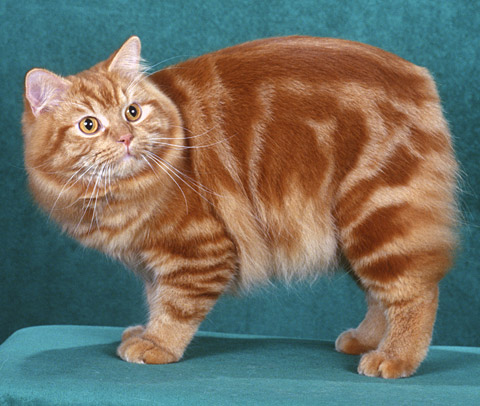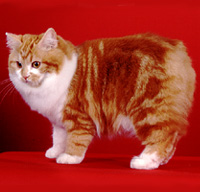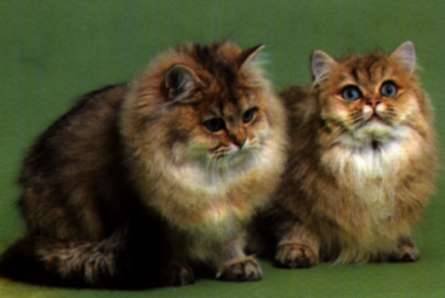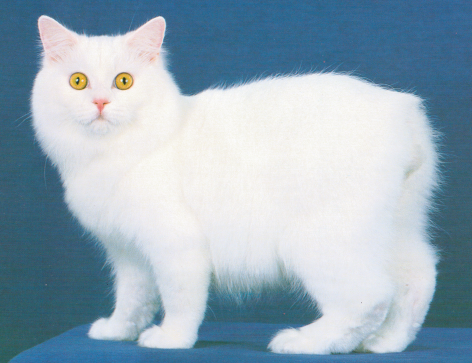



|
Cymric Description
Identical in all but coat length to the Manx, the Cymric and Manx have been combined into one category by some feline associations. A study in circles, the Cymric resembles a bowling ball that is medium in size. The Cymric takes up to five years to reach full maturity. Once maturity is reached, the males will weigh between ten and twelve pounds and the females between eight and ten. They lack a tail and ideally have a rounded rump with a small dimple in place of the tail. The hind legs should be longer than the front with rounded, medium sized feet. Ears are wide at the base and set wide on a rounded head. Eyes should be rounded, large angled and slightly lifted at the outer edge. Coat should be silky, well- padded and thick. The Cymric is allowed to come in any color just like the lovable Manx. There should be tufts of fur between the toes, britches should be easily visible and the ears should be fully furnished in the Cymric but not in the Manx
Cymric Temperament
Gentle giants and extremely playful, these excellent jumpers are highly intelligent and wonderful family pets. They are very curious and will use their excellent jumping ability to propel themselves to the highest of corners to investigate something that may have attracted their attention. They have been known to use door handles, fetch toys and even bury a toy that they find themselves particularly attached to. Though soft voiced they can be quite talkative and have an enchanting trilling way of speaking. Very people oriented, the Manx will bond hard and fast to those they call their own making re-homing difficult. When introduced properly they will get along easily with other pets and children.
Cymric Care
Because this is a tailless breed, there is an absence of vertebrae and with this absence there is always the concern of injury. Owners should always be sure to support the hind quarters of a Cymric or Manx when carrying their cat to prevent placing extra strain on the shortened spine. In addition, children and adults should both be careful not to poke or prod the missing tail area as this can cause extreme pain- the nerve endings in the spines of these animals are not only present, they are exposed and unprotected. Owners should be careful to discuss any genetic spinal disorders with the breeder and be sure to have their kitten examined by a vet before purchase. Other care for the Cymric is fairly easy, they enjoy a careful brushing to help keep mats under control and do not have any dietary requirements.
Cymric History
The Cymric and the Manx share a long and colorful history, with tales of their missing tails even including a story that Noah shut the door of the Ark on their tails and cut them off. They were first discovered on the Isle of Man in a feline population that was believed to have descended from cats aboard ships from nearby England and Wales. Eventually, a genetic mutation occurred within the population and the kittens began to be born without tails. Because the Isle of Man is fairly small and isolated, in-breeding led to this becoming a common trait amongst the cats and by 1750 they were known as 'stubbins'. The first painting of a tail-less cat was created in 1810 and by the late 1800's they were ready to be seen at the begin of the cat fancy era. The short hair versions were the first to be shown and to gain success, with the long-haired Cymric receiving recognition in later years.
|